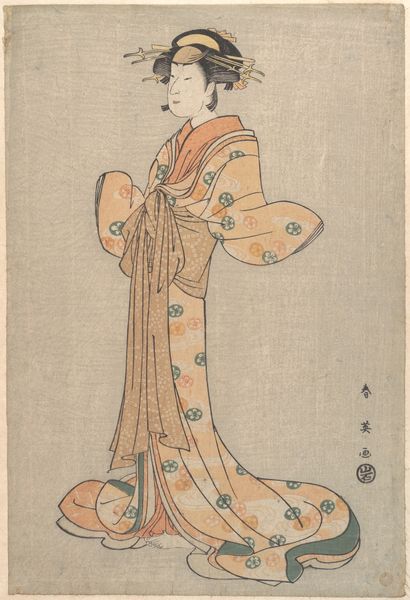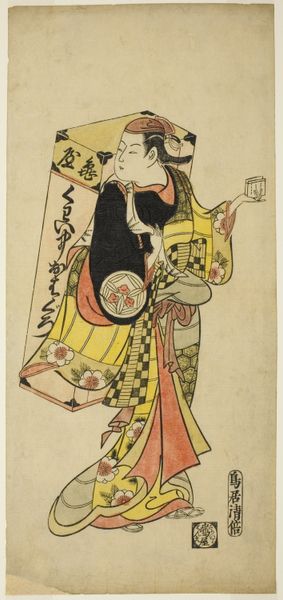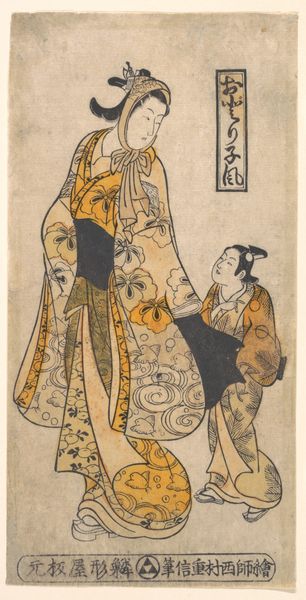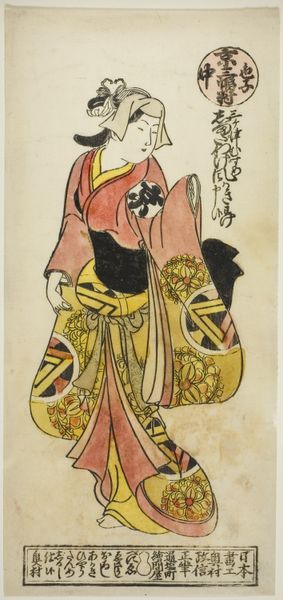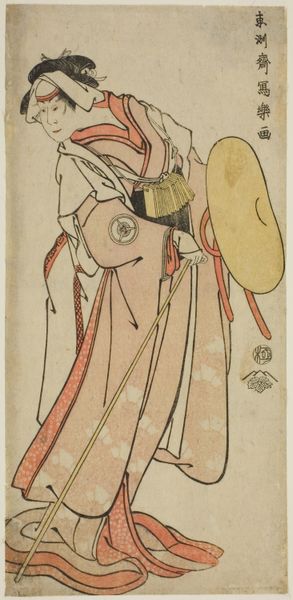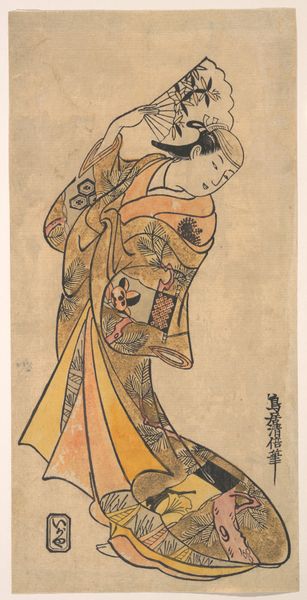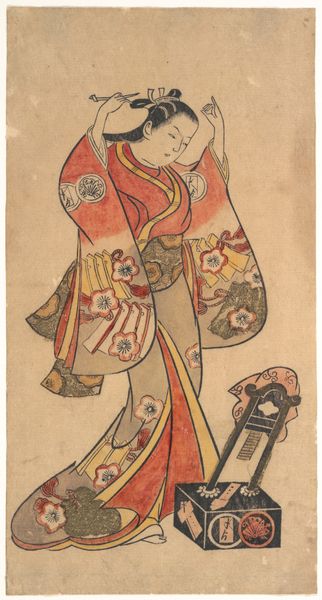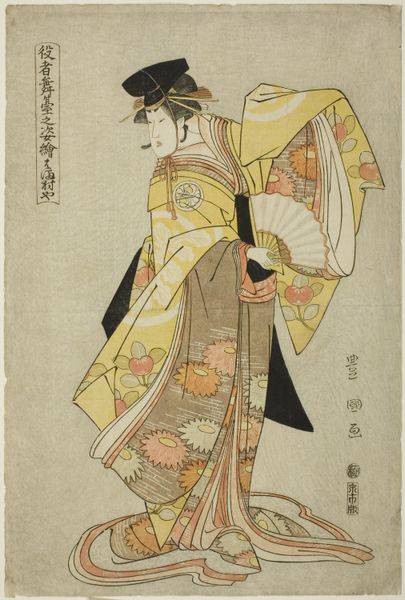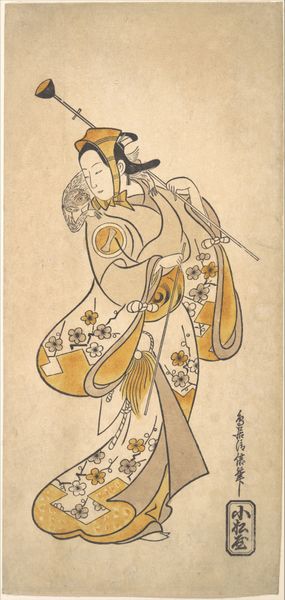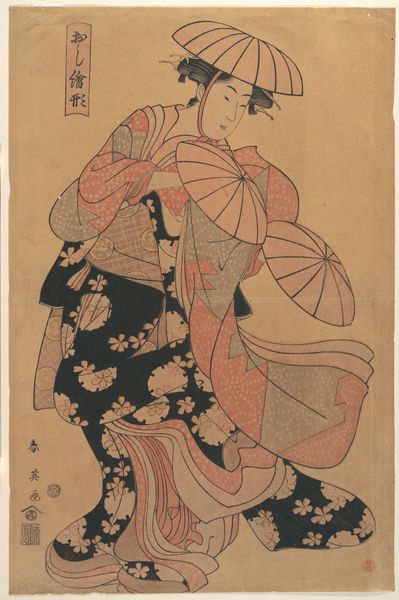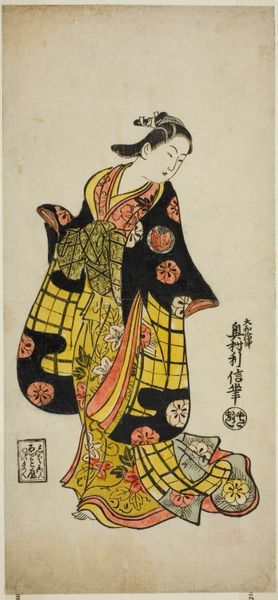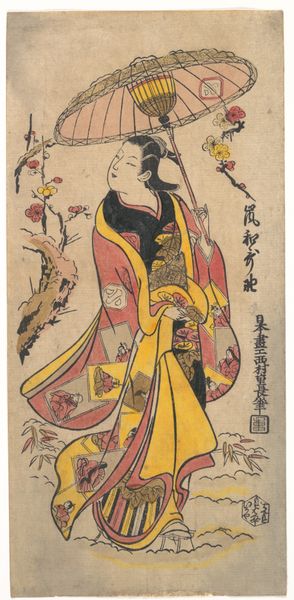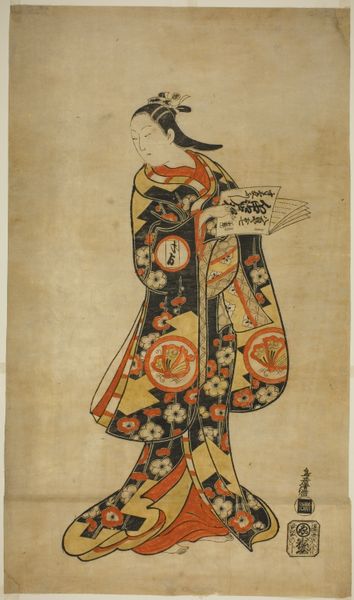
print, woodblock-print
#
portrait
# print
#
asian-art
#
ukiyo-e
#
figuration
#
woodblock-print
Dimensions: 20 7/8 × 12 1/16 in. (53 × 30.7 cm) (image, sheet, kakemono-e)
Copyright: Public Domain
Curator: Toshinobu Okumura's woodblock print, "Actor Sanjō Kantarō II as Yaoya Oshichi," made in 1718. It's part of the Minneapolis Institute of Art's collection. Such delicate lines for such a story... Editor: Oh, the color palette just whispers 'vintage' to me! Look at the pale pinks and yellows... it creates this wistful, romantic atmosphere. It feels like looking at a fading memory. Curator: Indeed, it's remarkable. Oshichi was, of course, a greengrocer's daughter who tragically set fire to a temple bell tower in 1682. All to meet her lover. Talk about forbidden love. This print transforms a tragic moment into an idealized, even erotic, theater performance, quite common within ukiyo-e. Editor: Isn't it fascinating how it reframes her story? She's no longer a rebellious arsonist, but an actress embodying romanticized suffering, staged, presented for polite entertainment. It sort of sanitizes it, right? But also keeps the memory alive in a safer manner. Curator: Absolutely, and by depicting the male actor playing the female role, the print layers artifice upon artifice. These theatrical portraits served as publicity for actors, circulating images, driving ticket sales and shaping public image. So it serves a socio-economic goal as well. Editor: The folds of that robe are mesmerizing! All the floral designs must've been painstakingly carved. She looks trapped in all those delicate folds of that gorgeous fabric, you know? A little sad perhaps, though perhaps its just that the whole story is in the back of my mind. It makes the print more evocative to see a specific mood captured within such a limited amount of colours. Curator: The details speak volumes about the world this print circulated in, from fashions to theater. Its preservation is its own fascinating part of its long social life. What starts as promotion becomes document and then treasured relic. Editor: This print gives a different layer of the narrative to consider. Its made me want to consider seeing an actual performance now! I might go look for ukiyo-e shows being performed in theaters nowadays after our tour.
Comments
minneapolisinstituteofart almost 2 years ago
⋮
The Kabuki actor Sanjō Kantarō II (1702–63) is depicted here in the female role of Yaoya Oshichi. Oshichi was burned at the stake after committing arson in a misguided ploy to be reunited with her lover. This composition shows Oshichi joyfully dressing her hair and suggests nothing of the terrible fate that will befall her. When Toshinobu designed this print, Sanjō Kantarō was at the height of his career as an onnagata, an actor specializing in female roles. His family crest, a butterfly in a circle, decorates Oshichi’s right sleeve and the mirror stand. The other crest on the mirror stand, in the shape of a folded letter, is that of Arashi Kiyosaburō, who first popularized the role of Oshichi in 1709. It became customary for actors who played Oshichi to wear Kiyosaburō’s crest in addition to their own, as a tribute to him.
Join the conversation
Join millions of artists and users on Artera today and experience the ultimate creative platform.
